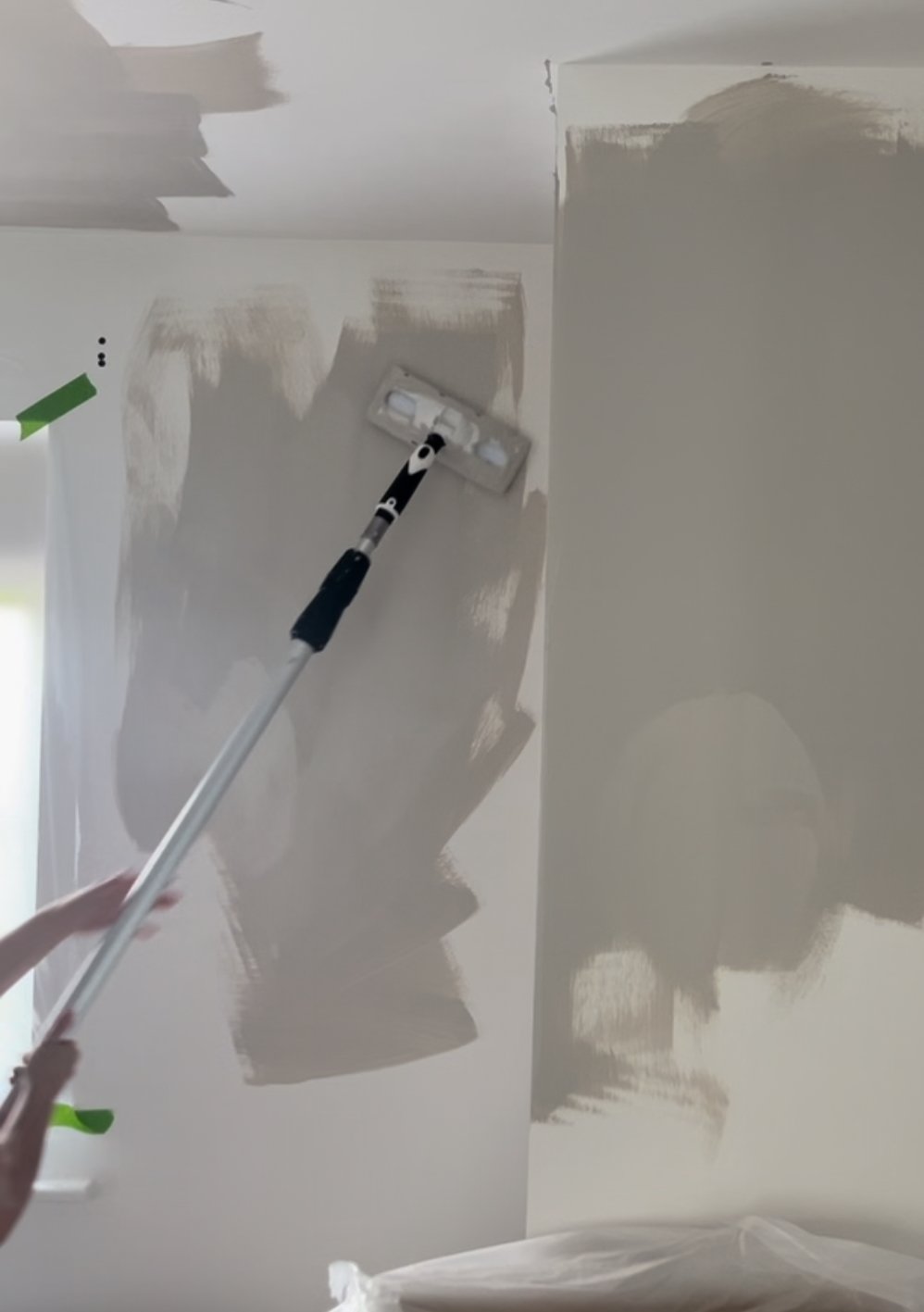Paint Roller vs. Paint Pad: Which Is Better for Your Next Paint Job?
When it’s time to give your walls a fresh coat of paint, the tool you choose can make a big difference in the finish, ease of application, and overall experience. Two common options—paint rollers and paint pads—each have their strengths and weaknesses. Though it may seem new- paint pads have been around a while!
I have always used a paint roller for decorating, but decided put paint pad to the test when I made over our guest room last year.
Whether you’re a DIY enthusiast or a professional painter, knowing the pros and cons of each can help you decide which is best suited to your project.
Here’s what I found!
Paint Rollers
Pros:
Efficient Coverage
Paint rollers are excellent for covering large, flat areas like walls and ceilings quickly and evenly. Paint rollers can often hold enough paint that one roll on will be enough for full coverage.
Smooth Finish with the Right Nap
Depending on the roller cover’s nap (thickness and texture), you can achieve a smooth or textured finish, making rollers versatile across different surfaces.
Widely Available & Affordable
Rollers and replacement covers are easy to find and generally inexpensive. Since rollers are more popular, they are well stocked with many options.
Works Well with Extension Poles
For high or hard-to-reach areas, rollers can be easily attached to extension poles, reducing the need for ladders. Paint pads can also attach to extension poles but are more difficult to maneuver from below.
Cons:
Drips and Splatter
Rollers can produce drips and splatter, especially when overloaded with paint or used too quickly.
Edge and Detail Work Is Difficult
They aren’t ideal for tight corners, edges, or trim, often requiring a brush or small paint pad for those spots.
Cleaning Can Be a Chore
Reusable roller covers need thorough cleaning, which can be time-consuming and messy.
Paint Pads
Paint pad in action in our guest room makeover!
Pros:
Crisp Edges and Detail Work
Paint pads are ideal for cutting in around trim, corners, and ceilings with clean, straight lines—no painter’s tape needed in some cases, especially when using some of the smaller, angled paint pads.
Less Splatter
Pads apply paint smoothly without the splatter or dripping commonly associated with rollers. The application is also usually very even. This makes painting with a pad ideal for ceilings.
Smooth, Even Application
They deliver a consistent coat of paint, especially on smooth surfaces.
Compact and Easy to Store
Smaller than rollers, pads are easy to store and handle, particularly in tight spaces.
Cons:
Slower for Large Areas
Covering a big wall with a paint pad can be time-consuming and physically tiring. I found the pad is limited with how much paint it can contain, therefore sometimes two coats were necessary to have full coverage.
Can Leave Streaks
If not used properly or if the pad is overloaded, it may leave visible streaks or uneven coverage. I found if there is too much paint on the pad, the pad overloads like a sponge and lets out paint on the edges of the area of application. These are easily smoothed over, but problematic if not seen prior to the paint drying.
Limited Nap Options
I’m referring to the “nap” which is the texture on the pad! Pads do have a variety of textures that can be applicable to different surfaces, however the options are more limited and not as widely available at the shops.
So, Which One Should You Use?
Use a paint roller if you’re tackling a large, open surface like a wall or ceiling and want fast, even coverage.
Reach for a paint pad when you’re focusing on detailed work like edging, cutting in, or small wall sections where control and precision are key.
For many painting projects, a combination of both tools is the best approach: use a pad for precise edges and corners, and a roller for the main surface.
Final Thoughts!
Choosing between a paint roller and a paint pad depends on the specific needs of your painting project. Each tool has its place in a painter’s arsenal, and using them together smartly can yield professional-looking results without the professional price tag.


